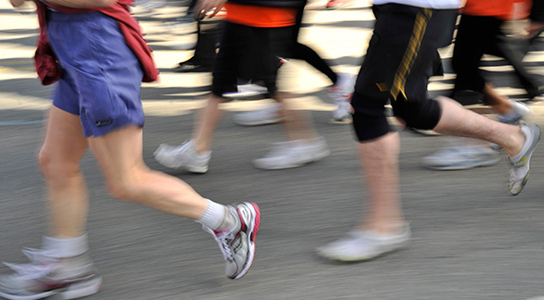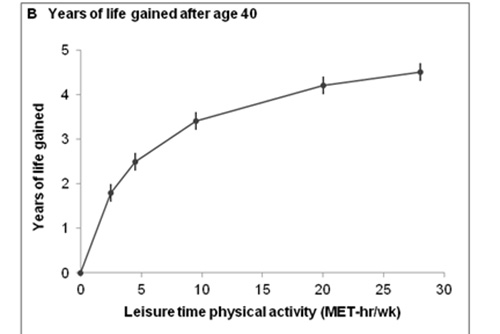
A recent study quantified the number of years of life gained by being active at various levels, considering all individuals and different groups with varying body mass indexes (BMI). Credit: Photo by Jon Chase/Harvard Staff Photographer
Previous studies have shown the link between physical activity and a lower risk of premature mortality, however, the number of years of life expectancy gained among persons with different activity levels has remained unclear. In this new study, scientists have quantified it.
The scientists published their findings in the journal PLOS Medicine. The study was done at the Brigham and Women’s Hospital (BWH) in collaboration with the National Cancer Institute. The researchers quantified how many years of life are gained by being active at different levels, among all individuals as well as among various groups having different body mass indexes (BMI).
Low amounts of physical activity, such as 75 minutes of brisk walking per week, was associated with an increased longevity of 1.8 years after the age of 40. Physical activity above this minimal level was associated with additional gains in longevity. Walking briskly for at least 450 minutes a week is associated with a gain of 4.5 years in life expectancy. This is applicable to people of all BMI groups.
In pooled data from six prospective cohort studies, researchers examined the associations of leisure-time physical activity of a moderate to vigorous intensity with mortality. The data was from more than 650,000 subjects and followed them for an average of 10 years, analyzing more than 82,000 deaths.

Researchers from Brigham and Women’s Hospital have quantified how many years of life are gained, by being physically active at different levels, among all individuals as well as among various groups with different body mass index (BMI). Credit: Courtesy of BWH
Physical activity is associated with longer life expectancy across a range of activity levels and BMI groups. By walking briskly for 75 minutes a week, the risk of mortality was reduced by 19%.
Those who did 150 to 299 minutes of brisk walking per week, which is the amount of physical activity recommended by the federal government, the gain in life expectancy was 3.4 years.
Those who did best were people of normal weight and active: among normal weight people who were active at the level recommended by the federal government, researchers observed a gain in life expectancy of 7.2 years, compared with those with a BMI of 35 or more who did no leisure time physical activity.
Reference: “Leisure Time Physical Activity of Moderate to Vigorous Intensity and Mortality: A Large Pooled Cohort Analysis” by Steven C. Moore, Alpa V. Patel, Charles E. Matthews, Amy Berrington de Gonzalez, Yikyung Park, Hormuzd A. Katki, Martha S. Linet, Elisabete Weiderpass, Kala Visvanathan, Kathy J. Helzlsouer, Michael Thun, Susan M. Gapstur, Patricia Hartge and I-Min Lee, 6 November 2012, PLOS Medicine.
DOI: 10.1371/journal.pmed.1001335









Be the first to comment on "Physical Activity & Life Expectancy Quantified in Study"